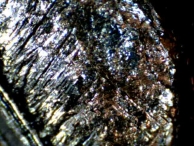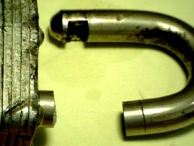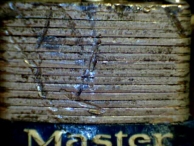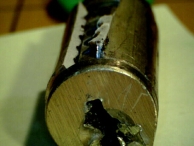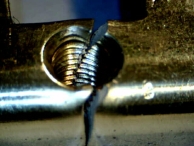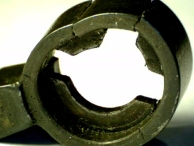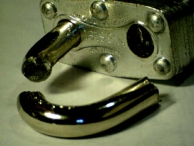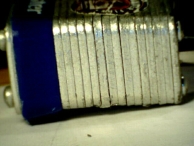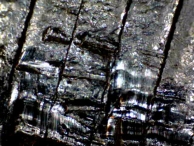Destructive Entry
Destructive entry (or forced entry) is a non-covert method of entry characterized by damage to or destruction of a lock, safe, or surrounding objects, such as a door, window, or wall. It is by far the most common method of entry and is frequently used by law enforcement and military personnel for rapid entry to a residence or facility. As you might have guessed, there are many ways to destroy things. Techniques are classified by their method of destruction in terms of the physics of the operation but often overlap and complement one another. All destructive techniques use energy or force to damage, displace, weaken, or destroy components. Once components of a lock, safe, door, window, or wall lose structural or molecular integrity their ability to resist compromise is considerably reduced. The general categories of destructive entry are: chemicals, compression, impact, shearing, temperature, tension, and torsion.
While the techniques discussed might seem advanced, the majority are rather simple when put in perspective; doors are kicked in, padlock shackles are cut, locks are drilled, et cetera. Techniques are categorized to help the investigator identify, define, and study new attacks. While tool designs differ greatly the tool marks and forensic evidence they leave behind may help investigators quickly identify the techniques used to gain entry.
Destructive Entry Principles
Chemicals are used to affect the molecular structure of components. Chemicals, namely acids, can corrode, disintegrate, or dissolve components. Like temperature, chemicals often leave components vulnerable to other attacks.
Compression is the use of pressure against a component in complementary directions. Essentially, the opposite of tension. It causes distortion, compaction, or breakage of components. Compression is most often used to reduce the strength of materials so that other methods can be used.
Impact is the use of pressure and shock against a component. Striking and explosives are most common. Impact has a wide variety of results including fracturing, breakage, deformation, and compression. Some methods of bypass use impact to retract the locking bolt, most of which are destructive. Explosives are one of the most dangerous methods of destructive entry and use has dwindled with time as safer alternatives, such as drilling, have become popular.
Shearing is the use of pressure on a component placed betweeeen two edges. Cutting, chopping, and drilling are included in this category. Drilling is the most popular method of destructive safecracking and removal of locks by a locksmith. In general, drilling is probably the easiest, fastest method of destructive entry.
Extreme temperature can be used to affect the molecular structure of components. High temperatures can vaporize, burn, melt, or re-temper components. Re-tempering can leave components soft or brittle, thus vulnerable to many other attacks. Low temperatures are less common, but can be used for similar purposes.
Tension is the use of pressure on a component in opposite directions. Stretching, pulling, prying, bending, or ripping are included in this category.
Torsion is the use of rotational pressure (torque) on a component. Twisting and torque and included in this category. Causes shearing, compression, and deformation of components.
Destructive entry is fairly straightforward in terms of method of entry, so the focus is on tool mark identification. The forensic locksmith must be wary of destructive techniques used as a method of hiding covert or surreptitious entry. A thorough investigation will reveal covert techniques and can potentially rule out destructive entry as the method of entry due to improbable direction, angle, or position of tool marks.
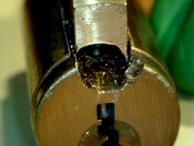 |
Drilling, a form of shearing, is the most common method of destructive entry against all types of locks. It is frequently used by locksmiths to remove locks when they cannot be opened non-destructively. In this photo, the plug of a KIK cylinder has been drilled at the shear line, allowing the plug to freely rotate. |
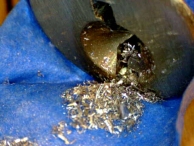 |
On the Forensic Investigation page we discuss the need to tape any openings in locks recovered at the crimescene. In the photo, a large amount of metal is present inside the lock, a product of drilling. This material is preserved because it may contain evidence useful to the investigation, such as shards of a broken drill bit. |
 |
Drills are much like firearms in terms of forensic evidence. Bullets fired from a gun have striae based on the barrel used; the same goes for drill bits used in destructive entry. In the photo, the spiral striae left by the drill bit can clearly be seen in the plug of the lock. |
Simulating lockpicking is common in insurance fraud or when the insurance holder is worried about coverage. These people rarely understand lockpicking and just jam a screwdriver in the lock to make marks. In most cases, material removal and tool marks are present at the front of the cylinder but not past the first or second pin. |
 |
The pins in simulated lockpicking will have a large amount of material removal and tool marks that are not consistent with any type of covert entry, including lockpicking or key bumping. Marks will usually not be found on the pins in the back of the lock, too. |
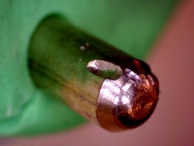 |
If you would like to help this site by donating any destructive entry tools or locks that have been compromised via destructive techniques, please contact me.



